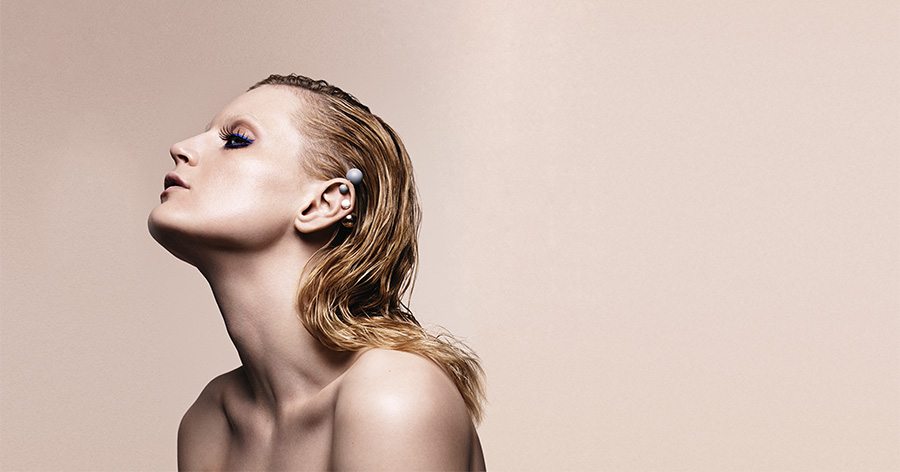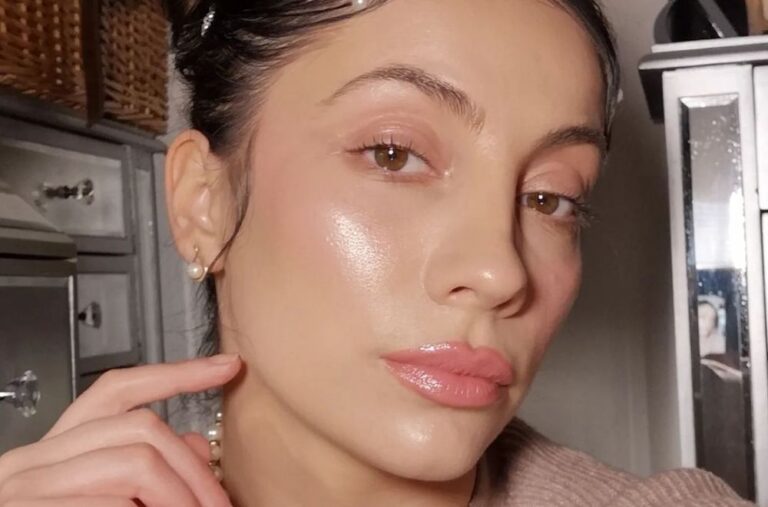The desire for healthy skin is having widespread impact in the beauty world, and it’s not only skincare that’s moving away from anti-ageing jargon: the future of cosmetic medicine is following suit. “A full face approach is the way of the future with a stronger focus on skin health,” says Sonya Hatangadi, training academy manager at Caci. “Nothing beats great skin, and we’re increasingly aware of factors that influence skin health and the process of ageing.”
Although misconceptions of radically changing your appearance may have once been entwined with cosmetic medicine, founder of The Face Place Dr Catherine Stone says the future will focus on ageing beautifully. Stone says, “We’ve never really talked about anti-ageing – you’re fortunate to age. It’s always been about helping people age beautifully and looking they best they can.”
Prevention is key
The answer to resilient skin is prevention, say the experts, and one of the biggest shifts is a growing awareness of this.
Dr Sarah Hart, cosmetic doctor and medicine expert at the Skin Institute, believes as a result we’re more motivated to take a hands-on approach to caring for our skin. “If you seek treatment when you first notice your skin ageing, then it can be addressed with gentler treatments, avoiding major procedures later on,” Hart explains. Dermatologist and director of Brisbane Skin Dr Shobhan Manoharan agrees, explaining that, to retain skin health, smaller treatments using energy-based devices and injectables can begin when the first signs of ageing appear.
And although Stone admits that it’s impossible to press pause on ageing completely, you can significantly slow it down. “If you start with baby doses, you can prevent some of the ageing process. Hyaluronic dermal fillers have been shown to strengthen the skin, you can strengthen the ligaments. We’re able to build up collagen supplies before you go through the process of using them all, so as you get older you’ve got more of it available. It’s ageing in a beautiful and authentic way.”
Natural beauty
Celebrities may have thrown cosmetic procedures into the spotlight but despite pop culture’s influence on the beauty world, Manoharan says these Hollywood-inspired trends are nothing new. “We’ve had the Monroes, the Twiggys, Zsa Zsa Gabor, all the historical beauty icons –
that will never change and will always be followed by some people,” he explains. “It’s just instantaneous now, thanks to social media. If a celebrity has a vampire facial, it’s deemed newsworthy, and our phones ring off the hook.”
Celebrities might continue to influence trends to some extent, however cosmetic practitioners agree that natural beauty is making a comeback. “With facial aesthetics we’re definitely reverting to a more natural look,” Manoharan says. “It’s all about volume replacement and redistribution, and we’re using more energy-based devices for lifting and tightening. We’re looking at ways to turn back the clock in a natural fashion so you don’t get an odd caricature of yourself,” he explains.
Hatangadi says that the desire for a more refreshed look has already arrived in New Zealand. “The trick is to look fantastic for your age. We are rejuvenating and enhancing existing structures – not changing or recreating.”
True contouring
Shifting stubborn fat has always been a challenge, but Manoharan is optimistic about a new fat-melting injectable, known as Belkyra or Kybella, that will launch in Australasia this year. “It reduces fat in the submental region under the chin, which is a concern area for lots of patients,” says Manoharan, who will be one of the first practitioners to use the game-changing injectable Down Under. “It’s very exciting for us. You need about three treatments and the improvements are something you keep, based on lifestyle and genetics,” he explains.
The injectable uses a synthetic version of deoxycholic acid, a naturally occurring molecule that assists with the breakdown of dietary fat. “If it lives up to its promises, it will be the beginning of a new era of facial rejuvenation,” says Hart, who’s been selected to treat the first patients in New Zealand, prior to its official release. When Belkyra launches it will be licensed to treat the submental region, but Manoharan says there’s potential for it to be used elsewhere. “Colleagues in America are trialling it in other places where it’s traditionally been very difficult to shift fat.”
The Face Place has been doing platelet-rich plasma-based treatments (PRP) for six years and Stone believes that its benefits are only just beginning to be discovered. The process involves drawing a small amount of blood from the arm that is put in a centrifuge to separate PRP from platelet-poor plasma and red blood cells. While some doctors are using it for wound healing and repair, it’s going to be a procedure to watch in beauty. According to Stone, doctors in the US are looking at using PRP for body contouring. “There’s a doctor taking out fat, then injecting it back in with PRP to stimulate muscle growth. The results were stunning; it’s something we haven’t seen before,” she says.
Watch this space
New devices and refined existing tools including pico-second lasers and hybrid wavelengths will mean less downtime and better results, says Manoharan. He adds, “Improvements with devices are making this possible.” Radio-frequency micro-needling is another device-based treatment that we’ll see evolve. “The technology is going to improve dramatically over the next 24 months,” says Manoharan.
Cryotherapy has been used for a long time in sports medicine, but Stone says it’s something we’ll start to see more of in beauty – dry ice facials and facials using chilled implements are a few treatments that could make their way onto treatment menus. “When the cool temperatures are applied blood vessels are squeezed down, then what happens is something called reperfusion, which stimulates blood flow black into the area,” Stone explains.
“Centres are already being set up
to analyse your genetics and increase
our life span,” says Stone. As for how genomic analysis will impact on cosmetic medicine, Stone explains it
will enable more tailored and customised treatments. “With more analysis of the genome and microbiome, it will help
tell us what treatments are appropriate for individuals.”
It might sound like science fiction, but Stone says there could be a future without doctors as we know them. “It’s going to
be interesting to see what role artificial intelligence and augmented reality play in cosmetic medicine,” says Stone. While she doesn’t believe robots will be taking over quite yet, she expects technological advances will improve treatments. “I think we’ll see an increased use of tools
to help us analyse the face better.”
Ask an Expert: Dr Sarah Hart, cosmetic doctor at the Skin Institute.
What trends have you noticed emerging in cosmetic medicine recently?
People are more proactive, seeking out a skilled cosmetic medicine practitioner, then forming a long-term relationship with regular visits. Practitioners have become the “go-to” partner for improving ageing skin. Once you find the right practitioner it becomes a partnership. I have patients I’ve treated for more than 15 years now, with small amounts of filler to support sagging, regular micro-needling on platelet-rich plasma to create collagen and tiny amounts of Botox to relax muscles. Add in nourishment with scientifically advanced, doctor-only skincare, prescribed for your skin, and this “little and often” approach can keep your skin looking great as the years pass.
What interesting advances and innovations will we see this year?
I think we’ll see a lot more people discovering the benefits of dermal fillers made from hyaluronan. They are hugely versatile; and emerging new products and techniques are changing the way we use them. Rather than using fillers just for fuller lips or cheeks, we can subtly improve sagging. To achieve this we might place filler in unexpected areas, such as in front of the ear or in the temple, to improve your jowls, for example. This newer, holistic approach won’t leave you looking “done” – just a fresher version of yourself. It’s an international trend, now coming to New Zealand, that I’ve been teaching in Australia and China. I’m now sharing these techniques with our team of nurses here at Skin Institute. It’s exciting.
We are also using lighter, thinner versions of hyaluronan dermal fillers, placed with a special gun into the very top layers of the skin. This is a little like putting a great moisturiser directly under the surface, where it can nourish skin internally. Research shows treatment improves skin hydration, texture and elasticity. The face, neck, décolletage and hands can all be treated. Skin Institute Queenstown is the first in our group to offer the DermaGun treatment and we’re seeing exciting results.







